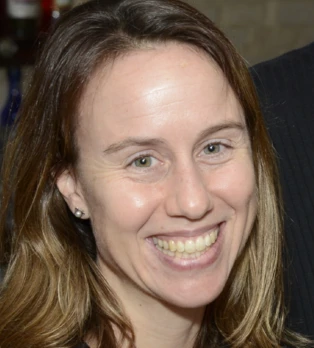About "Notes From the Field": With this occasional feature, we let World Bank professionals who are conducting interesting trade-related projects around the globe explain some of the challenges and triumphs of their day-to-day work. The views expressed here are personal and should not be attributed to the World Bank. All interviews have been edited for clarity.
The Trade Post: Tell me a little bit about your background and how you became interested in trade.
Ms. Isik: My background is actually in macroeconomics but I always had an interest in international trade throughout grad school. When I joined the Africa Region I worked with the advisor to the Chief Economist on trade and regional integration issues, that’s when I started getting a real sense of the micro side of things and the day-to-day constraints that ordinary firms and individuals face in trading across borders, which got me more and more interested in this topic. Since then I’ve worked almost exclusively in areas related to trade and regional integration.
The Trade Post: You recently did some important work in Sierra Leone – an update to a Diagnostic Trade Integration Study (DTIS) originally done in 2006. Why are these studies important, in general, and how do they help developing countries?
Ms. Isik: DTISs provide in-depth analysis of domestic and external constraints to competitiveness and supply chain weaknesses in a number of key sectors. You look at the various impediments and then you come up with a list of recommendations to overcome these impediments. One of its main goals is to come up with an Action Matrix consisting of priority areas of intervention to help countries prioritize and sequence trade related strategies and policies to eliminate these impediments, increase efficiency and reduce trade costs. The Action Matrix is the priorities. You don’t include every single recommendation into that Action Matrix. It helps the government prioritize and sequence the reforms. These diagnostic studies also identify sectors and products with the greatest potential for export growth and provide recommendations on boosting competitiveness in these sectors.
These studies are important for developing countries because they integrate trade into national development and poverty reduction strategies as well as government relations with the private sector and the donor community. Our counterpart is the government, the Ministry of Trade, but when we do our consultative workshops and our interviews and case studies, we meet with the private sector as well. Especially for these cross-cutting issues like trade facilitation, you just have to talk with the importers, the truck drivers, the logistics companies. You can’t do it without them. So it does, in a sense, bring the government together with the private sector to discuss these things. In short, the DTIS exercise helps advance the role of trade in poverty reduction and economic development.
The Trade Post: The World Bank executes many of these studies each year. How did your team decide to focus on Sierra Leone?
Ms. Isik: The DTIS is not an annual exercise but rather something the Bank carries out around every 5 to 7 years at the request of the country. A DTIS is generally undertaken prior to the launch of a new poverty reduction strategy or some other comprehensive national development strategy which the DTIS will feed into. So, it is entirely up to the country on which institution they decide to task with carrying out the DTIS, this can be the Bank, the UNDP, UNCTAD, WTO or even in some cases the country itself. In the case of Sierra Leone we have a long standing engagement in trade related areas, we had done the first DTIS so the Ministry of Trade and Industry requested that we also carry out the update.
The Trade Post: How did the study in Sierra Leone unfold – what sectors did you examine and what kinds of tools did you use?
Ms. Isik: Sierra Leone was preparing to launch its third Poverty Reduction Strategy Paper (PRSP) in 2013. Countries usually do this every five years to six years, and it’s basically their wish-list of areas to engage donors. Sierra Leone wanted to update the DTIS so that the new action matrix would inform the competitiveness and export promotion pillars of the PRSP-3. In 2012, we had a series of initial discussions with the Ministry of Trade on the scope of the study. Since this was a DTIS update rather than a full DTIS, the study had to be more focused in terms of which sectors were covered, so only key sectors with export and employment potential were included which are agriculture, fisheries and tourism. In addition to the sector studies we also covered cross-cutting themes like trade facilitation and regional integration, as well as trade policy and institutions. Despite being one of the most important sectors in Sierra Leone’s economy, we intentionally left out the mining sector because there had been a large number of in-depth analyses carried out by the Bank and other institutions in this area. So in close collaboration with the Ministry of Trade and Industry (MTI) we decided to instead focus our resources on sectors that have not received as much attention and to treat mining as more of a cross-cutting issue by examining the impact of growing mining activities on other sectors.
The tools used in carrying out this study are mostly face to face interviews with a wide range of stakeholders, sectoral case studies, and analytical tools such as agricultural value chain studies. For instance, we employed value chains studies to identify the various barriers along the entire supply chain for key products like rice, cocoa, palm oil and cassava. These value chain studies helped estimate the costs incurred as a result of these impediments and how they accumulate along the value chain as they reach the end consumer.
The Trade Post: Were there any hurdles in doing the research on the ground, and how did you overcome them?
Ms. Isik: In a country which is still recovering from over a decade long civil war that decimated most basic infrastructure, institutions and human capital, challenges associated with weak capacity are always going to come up, so you have to find some creative ways to get around these issues. When carrying out DTISs we partner with local researchers for a lot of the field work. As is the case with a lot of LDCs in West Africa, local research capacity is quite low, so we partner local consultants with international ones or with Bank staff which helps build local research capacity and also ensures quality control.
The lack of reliable data was also a big hurdle in preparing this study. Especially in terms of trade statistics, very little data exists on cross-border flows with Liberia and Guinea, and the situation is just as bad on the other side of the border so we can’t rely on mirror data either. In the timeframe of carrying out a DTIS, it is very difficult to overcome this particular challenge and unfortunately we did not have adequate time to undertake a comprehensive data collection exercise so we had to rely on whatever official data was available.
The Trade Post: What were some of the key findings in the 2012 study?
Ms. Isik: The first DTIS was very broad. It was a full DTIS - basically, the kitchen-sink approach. They had everything in there. It was a very, very comprehensive Action Matrix – honestly, impossible to implement all of it, and it wasn’t very well-sequenced so there was some confusion over which to do first. We found with the update that some of the obvious recommendations were addressed, like building the roads that were destroyed in the war. But then you look at the road maintenance program and find that it is grossly inadequate, so these roads are going to deteriorate in another year or two, or they had already started to deteriorate. You need to have the policy framework in place before you start to get to the hard side of things. They’re not matching the hard and the soft. And this is not just Sierra Leone specifically. We’ve seen this everywhere around the world, especially in Africa. As the Trade Practice, we’re trying to do a lot of work on these issues.
In summary, the update found that despite huge progress having been made since 2006 in some areas like the rehabilitation of physical infrastructure and customs administration, implementation fell short in a number of others, in particular those relating to cross-cutting issues core logistics services and standards. I would say that the main message to emerge from the implementation of the 2006 DTIS and the subsequent update is that a holistic approach is needed for trade related strategies and investments to truly achieve their intended purpose.
The Trade Post: What were some of the most surprising changes that the country’s business and trade environments have undergone since the original 2006 study?
Ms. Isik: There have been a number of developments since 2006 at the national, regional and global level that have changed the trade and business environment in which Sierra Leone operates. The biggest change has been at the national level as Sierra Leone has grown rapidly from a low base and moved away from a post-conflict environment towards a country with aspirations to achieving middle income status in the medium term – I think the titles of the upcoming PRSP-3 and its predecessor reflects this shift very nicely: The2007 Agenda for Change vs. The 2013 Agenda for Prosperity.
The global economic crises in 2008-09 also led to some significant changes. With the global crisis, demand for Sierra Leone’s exports dropped sharply, in particular from their biggest trading partner, the EU. When demand from traditional partners slowed down Sierra Leone had to start looking in to alternative markets and ways to facilitate and boost intraregional trade, which has had some interesting results on the ground like the recent joint-border post with Guinea that opened last year, with another one planned with Liberia later this year.
The Trade Post: What is the next step for Sierra Leone in the short-term?
Ms. Isik: The next step for Sierra Leone is to validate the recommendations put forward in the DTIS update. This means that everyone gets together – it’s a huge group – in one room for two days. When I say everyone, I’m not just talking about the various ministries. I’m talking about the private sector, civil society groups, donors – everyone’s there. We basically go over the Action Matrix and talk about how to implement, who implements, and ask “is it possible in that time frame?” Every action is validated. We break out in sectoral groups, cross-cutting groups. It’s just a very intense sort of stakeholder dialogue. Once this is done, the Sierra Leone government will endorse the DTIS Update and begin to engage the Enhanced Integrated Framework (EIF) and other donors for support in implementing the updated action matrix.
The Trade Post: Is there anything else you would like to add about this project?
Ms. Isik: I think it’s important to note that as TTLs we also need to do more for the DTIS exercise to be successful by carrying out wider dissemination within the country. For dissemination what we have is this validation workshop, which is in the capital city. And you have a lot of stakeholders in the provinces who don’t even know what a DTIS is or what is happening. So I think it’s a good idea to hold, not only a validation workshop in Freetown, but dissemination workshops in some of the provinces. Especially with the timing this time: the Liberia DTIS and the Sierra Leone DTIS, they’ve come out at the same time, so we have an opportunity to do some sort of cross-border stuff. We could have a workshop at the border and look at all these customs and border-management issues, because these have to be addressed jointly.


Join the Conversation